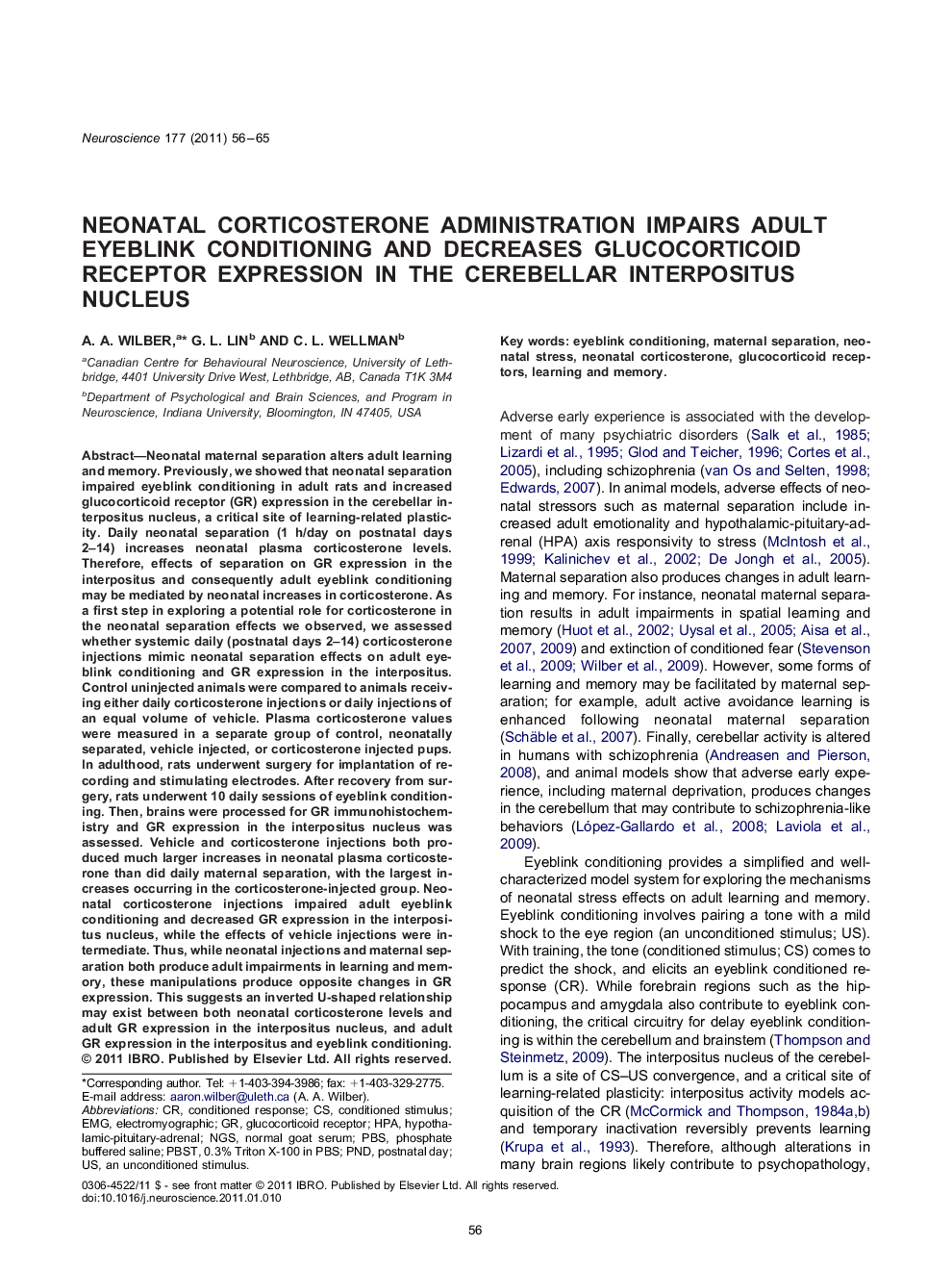| کد مقاله | کد نشریه | سال انتشار | مقاله انگلیسی | نسخه تمام متن |
|---|---|---|---|---|
| 6276496 | 1614899 | 2011 | 10 صفحه PDF | دانلود رایگان |

Neonatal maternal separation alters adult learning and memory. Previously, we showed that neonatal separation impaired eyeblink conditioning in adult rats and increased glucocorticoid receptor (GR) expression in the cerebellar interpositus nucleus, a critical site of learning-related plasticity. Daily neonatal separation (1 h/day on postnatal days 2-14) increases neonatal plasma corticosterone levels. Therefore, effects of separation on GR expression in the interpositus and consequently adult eyeblink conditioning may be mediated by neonatal increases in corticosterone. As a first step in exploring a potential role for corticosterone in the neonatal separation effects we observed, we assessed whether systemic daily (postnatal days 2-14) corticosterone injections mimic neonatal separation effects on adult eyeblink conditioning and GR expression in the interpositus. Control uninjected animals were compared to animals receiving either daily corticosterone injections or daily injections of an equal volume of vehicle. Plasma corticosterone values were measured in a separate group of control, neonatally separated, vehicle injected, or corticosterone injected pups. In adulthood, rats underwent surgery for implantation of recording and stimulating electrodes. After recovery from surgery, rats underwent 10 daily sessions of eyeblink conditioning. Then, brains were processed for GR immunohistochemistry and GR expression in the interpositus nucleus was assessed. Vehicle and corticosterone injections both produced much larger increases in neonatal plasma corticosterone than did daily maternal separation, with the largest increases occurring in the corticosterone-injected group. Neonatal corticosterone injections impaired adult eyeblink conditioning and decreased GR expression in the interpositus nucleus, while the effects of vehicle injections were intermediate. Thus, while neonatal injections and maternal separation both produce adult impairments in learning and memory, these manipulations produce opposite changes in GR expression. This suggests an inverted U-shaped relationship may exist between both neonatal corticosterone levels and adult GR expression in the interpositus nucleus, and adult GR expression in the interpositus and eyeblink conditioning.
Research highlightsâ¶Vehicle and corticosterone injections produce large increases in corticosterone. â¶Neonatal corticosterone injections impaired adult eyeblink conditioning. â¶Neonatal corticosterone injections decreased GR expression in the interpositus. â¶Neonatal vehicle injections effects were intermediate to control and corticosterone.
Journal: Neuroscience - Volume 177, 17 March 2011, Pages 56-65